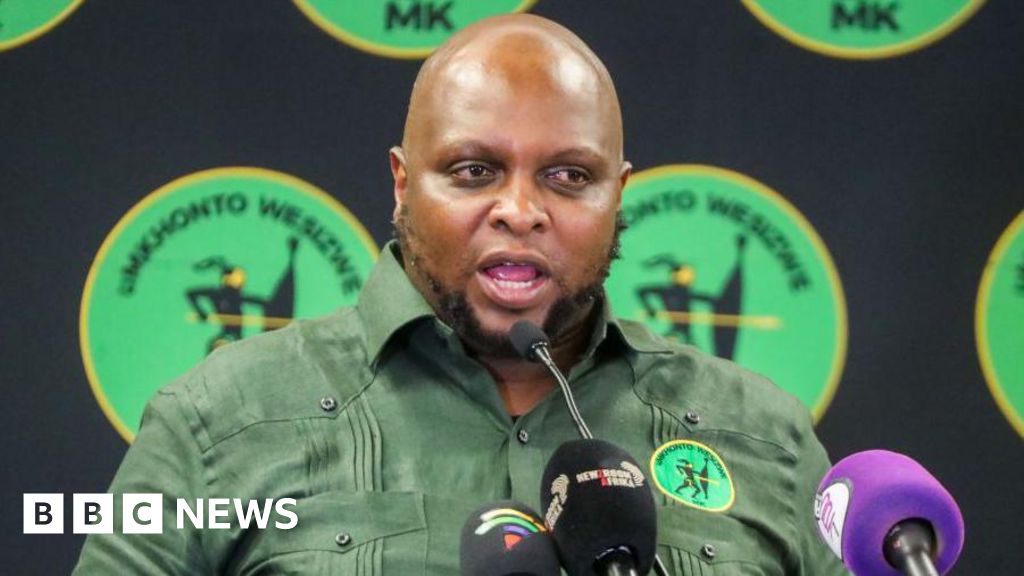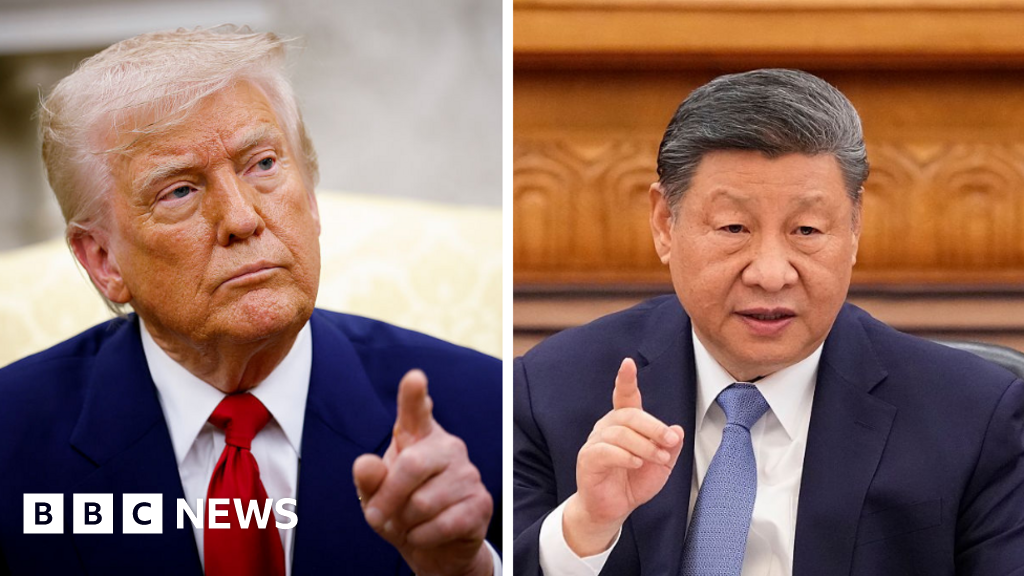At 4am on Wednesday, May 7, a delegation of Chinese embassy officials, roused from their sleep, arrived at the Pakistani foreign ministry headquarters in Islamabad for an upbeat military update, according to Pakistan’s top diplomat.
It was just hours after India launched its Operation Sindoor with an opening salvo of strikes on Pakistan in response to a deadly April 22 terror attack in Indian-administered Kashmir. India blamed Pakistan for the attack, Islamabad denied the allegation, but was nonetheless prepared for India’s military riposte.
So were the Chinese weapon systems acquired by Pakistan in recent years.
When the Chinese delegation, led by Beijing’s ambassador in Islamabad, arrived at Pakistan’s foreign ministry, they were promptly given the good news, Pakistani Foreign Minister Ishaq Dar told parliament later that day.
“Our jet fighters … shot down three Indian Rafales, three Rafales [that] are French,” Dar told the National Assembly. “Ours were J-10Cs,” he noted, referring to the Chengdu J-10 Vigorous Dragon, a Chinese multipurpose fighter jet that was untested in an active combat zone until the latest India-Pakistan armed clash.

The Chinese delegation was very pleased with the J-10 performance on the battlefield, Dar continued. “Being a friendly nation, they expressed great happiness,” he claimed.
Indian officials have declined to comment on the loss of its aircraft in the four-day conflict. Chinese authorities meanwhile have been tight-lipped about Dar’s revelations of a pre-dawn briefing-visit by its top diplomat in Islamabad to the Pakistani foreign ministry. When asked, a Chinese foreign ministry spokesman told a Bloomberg reporter that he was “not familiar with the matter you mentioned”.
Transparency on security issues is not the norm in a region that has seen three nuclear-armed neighbours engage in frequent clashes and combat over the past seven decades. Regional experts and military analysts instead rely on a mix of high-level intelligence sources and satellite sleuthing to piece together the lessons from the clashes.
Read moreDid Pakistan shoot down three Indian Rafale jets in Kashmir clashes?
In the aftermath of Saturday’s ceasefire, attention has focused on Islamabad’s new range of Chinese weapons and defence systems that finally saw combat during the May 7-10 India-Pakistan armed clash. It came as India’s newly acquired arsenal of mostly Western arms took on China’s increasingly sophisticated military hardware.
‘Big victory for China in terms of perception’
The odds were in New Delhi’s favour ahead of its retaliation for the April 22 terror attack. With its first strikes, India signalled a break from its traditional doctrine of strategic restraint, hitting targets not just in Pakistani-administered Kashmir and remote border regions, but in the country’s political heartland Punjab province.
India’s escalation raised international alarm bells on the second day of clashes, when it hit the Nur Khan air base in Rawalpindi, a garrison city near Islamabad. Situated just a short distance from the headquarters of Pakistan’s Strategic Plans Division, which oversees and protects the country’s nuclear arsenal, the Nur Khan base is a key hub for the country’s military.
To display this content from , you must enable advertisement tracking and audience measurement.
Another surprise was Pakistan’s robust response to the Indian escalation.
Pakistan’s claim that its J-10 fighter jets brought down India’s French-made Rafales sparked exultation on Chinese social media platform, Weibo, with many users speculating that buyers will probably soon be flocking to Chinese arms manufacturers.
India’s decision to neither confirm nor deny the loss of its top-end fighter jets has added credence to the downing claims. While Rafale manufacturer Dassault Aviation did not respond to FRANCE 24’s request for a comment, Reuters reported that at least one of India’s downed fighters was a Rafale. A Washington Post analysis conducted by three ordnance experts concluded that verified images from the downing site showed the debris was “consistent with at least two French-made fighter jets flown by the Indian air force – a Rafale and a Mirage 2000".
The takeaways of the May 7-10 military engagement for Yun Sun, director of the China Program at the Washington DC-based Stimson Center, are two-fold. “The first one is that the Indian weapons system is not as effective as a lot of people thought they would be,” she noted. “The second takeaway is that the Indian strategic intent could be more ambitious than a lot of people had expected.”
While cautioning that it’s still too early to “jump to conclusions”, Carlotta Rinaudo, a China expert at the International Team for the Study of Security Verona, notes that perception is key in initial assessments. “And this was a big victory for China in terms of perception,” she said, referring to the performance of China’s J-10 jets. “For a country that hasn't fought, theoretically, any war since the war with Vietnam in 1979, for a country that hasn't really engaged in war and its own weapons don't really have that sort of global recognition as, let's say, French weapons or American weapons, this is a big, big victory in terms of perception,” she added.
Not just cheap, but good
India’s image on the global geopolitical stage has been enhanced in recent years with the country emerging as a counterweight to China in the Indo-Pacific region. Its recent arms acquisitions made headlines as Prime Minister Narendra Modi, in a bid to upgrade the country’s ageing mostly Russian-supplied arsenal, signed billion-dollar arms deals with France and the US.
Read moreArms deals on parade as France's Macron hosts India's Modi
During the 2017-2021 period, India was the world’s largest arms importer, according to the Stockholm International Peace Research Institute (SIPRI), slipping to second place after Ukraine following the Russian full-scale invasion.
Pakistan meanwhile was moving away from its Cold War reliance on US weapons as Washington ended its proxy war against the Soviet Union in neighbouring Afghanistan and finally pulled out of the war-torn country in 2021 after years of US frustrations over the Pakistani military’s commitment to its war on terror.
Amid rising anti-US sentiments, Islamabad turned to its old regional ally, China, which also has territorial disputes with India, for its arms procurements. Beijing has long supported Islamabad with its cooperation on nuclear expertise while its weapons supplies were restricted to tanks, artillery and small arms.
Under President Xi Jinping, China began upgrading its arms manufacturing capabilities, increasing its weapons exports, primarily to Global South countries in Africa, Latin America and Asia. During this period, Chinese weapon exports were primarily hailed for their pricing, not technological, advantage.
“We always had the impression that Chinese weapons were the same as Chinese goods in a way. We assumed that Chinese weapons are inferior. This is not the case anymore,” said Rinaudo. “We saw China initially just selling tanks and smaller weapons, especially to Pakistan. Now we see very modern and sophisticated weapons being sold that are actually being very effective. So, the lesson that we should all take out of this is that perhaps Chinese weapons are not inferior to Western weapons. We should change that paradigm that we’ve been holding for very long.”
Sun however warns against facile assessments of Chinese arms superiority, noting that there are several factors contributing to battleground effectiveness. “It's very easy to generalise, to say this Chinese weapons system is superior. But at the same time, it’s also the training of the pilots, the coordination among different weapons systems that are important,” she said.
India’s defences, drones show their might
But while the J-10s, by all accounts, surpassed expectations in the combat zone, Pakistan’s Chinese-manufactured HQ-9 defence system showed weaknesses, enabling India’s long-range French SCALP missiles to lock-in and fire on targets after penetrating Pakistani aerial defences.

Meanwhile India’s Russian-made S-400 defence system, one of India’s top military inventory items, passed the battle test, according to experts.
“In this engagement, both sides discovered and exposed their strengths and their weaknesses as well,” said Rinaudo. “Definitely the defence system was Pakistan’s weak point.”
The May 7-10 combat also witnessed the first drone warfare between the two nuclear-armed South Asian neighbours. India’s reported deployment of Israeli-made Harop drones managed to neutralise several Pakistani radar systems, according to the Indian military.
The drone strike, Rinaudo explained, was “basically like you are punching the system in one of its eyes and the eye is not working anymore. So that eye doesn't see the missile or the drone going into Pakistani territory. That's a big embarrassment for the Pakistani side,” she said.
To display this content from , you must enable advertisement tracking and audience measurement.
Taiwan watches in the wings
Information gleaned from the hardware used in military skirmishes have long been studied by allies, weapons manufacturers and defence consultants. The latest conflict, which drew state-of-the-art weapons from China and NATO member countries, is likely to be closely watched in Taiwan, particularly since Chinese J-10 jets have been patrolling the Taiwan Strait in recent years, according to many experts.
But Sun, who has been fielding questions of Taiwan’s interest in the India-Pakistan clashes over the past few days, says the analysis for Taipei was akin to “comparing apples to oranges. Between India and Pakistan, it was primarily aerial battle involving air forces. But for Taiwan, the military scenario is primarily based on the navy: US Navy Marines, as well as the army for amphibious landings. The air force will play a role, but it's probably not going to be the primary driver.”
While Chinese social media users may be celebrate their country’s recent arms outperformance, the India-Pakistan clashes have also exposed Beijing’s limited diplomatic power, according to Sun.
New Delhi’s recklessness in targeting sites such as the Nur Khan airbase, for example, raised fears of a nuclear threat, which Beijing, in its pursuit of stability, was desperate to avert. But it lacked the means. Even under an erratic Trump administration in the White House, in the end it was left to the US to exert the diplomatic weight to pull the two South Asian rivals back from the brink.
“I don't think the Chinese were in the position to mediate anyway because the Indians would not accept Chinese mediation,” said Sun. “This is a demonstration of the mediation power that US possesses over both parties while in the Chinese case, it is not perceived as a neutral party, it almost entirely chose to side with Pakistan.”











 English (US) ·
English (US) ·